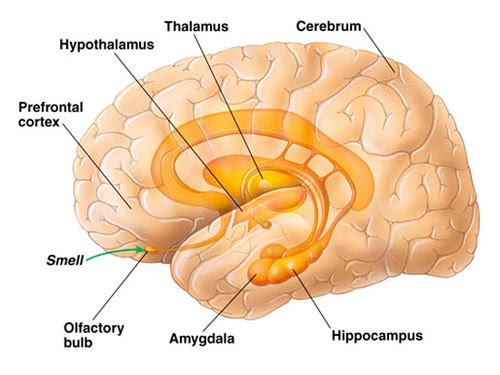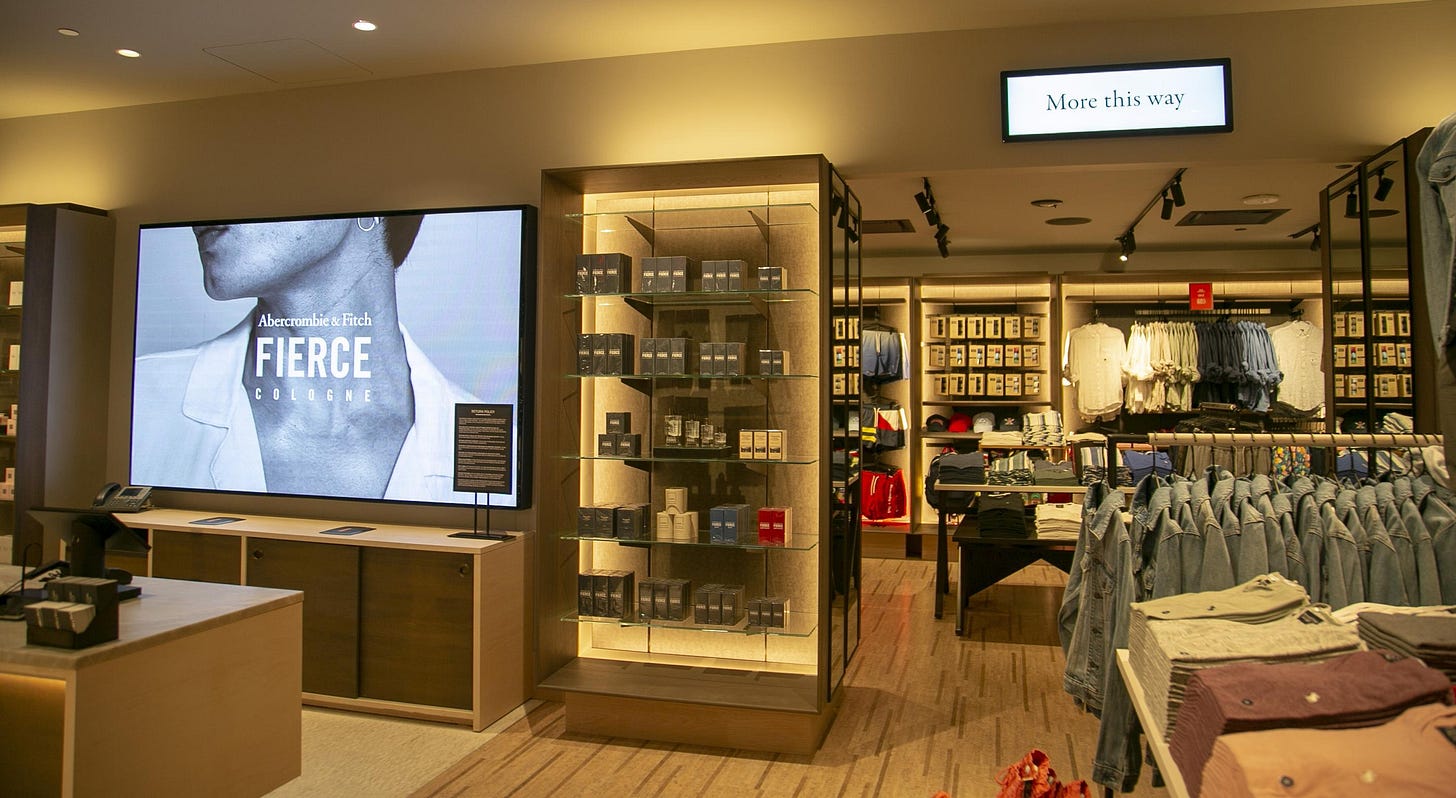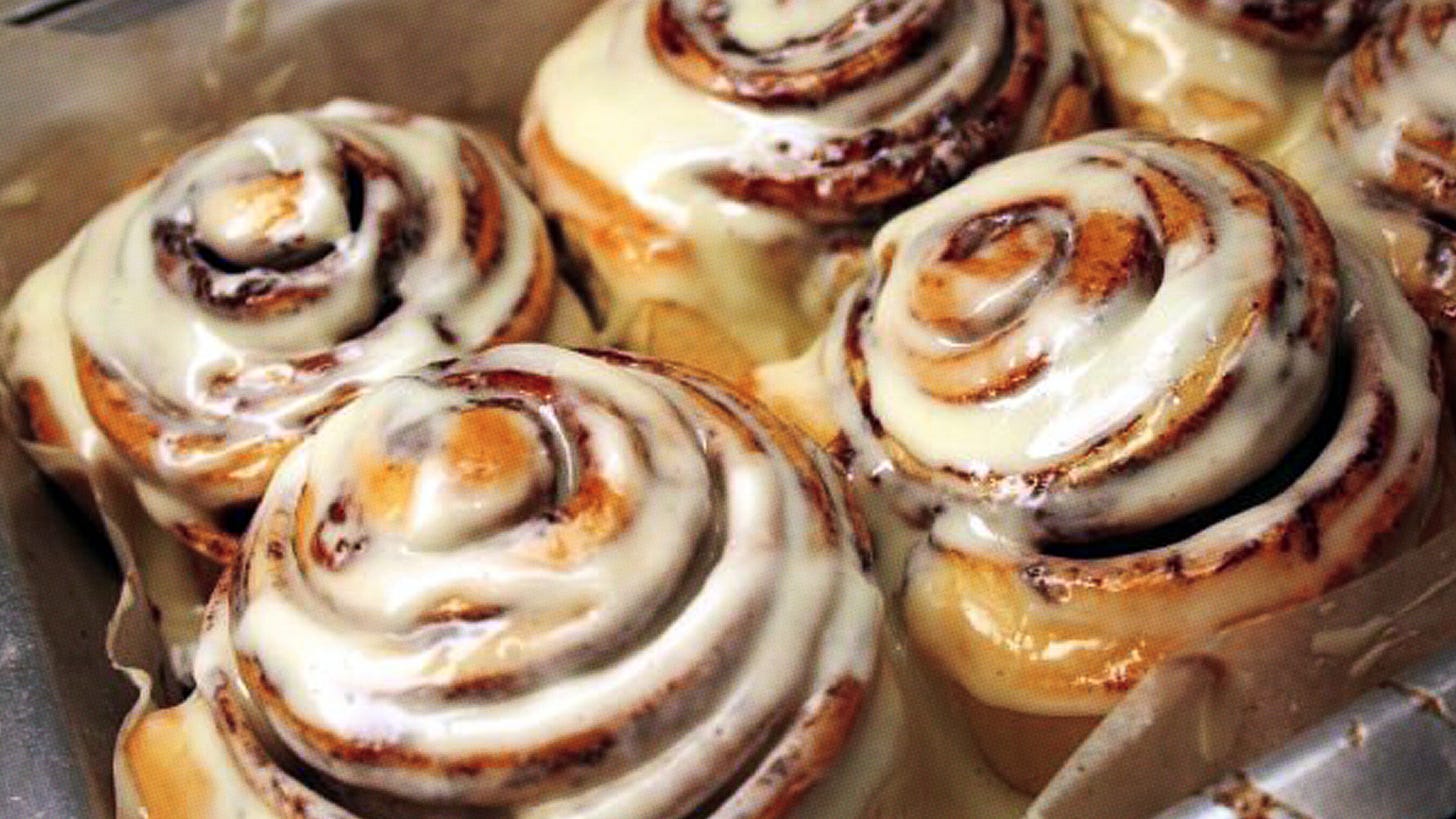How Does Scent Influence Our Purchases?
Our sense of smell is a powerful lever for experiences - but is there a darker pattern between scents and the brands we love?
In early December, I was back home for the holidays when a package arrived that caused everyone in my family to raise an eyebrow.
It was a scented candle, which in itself wasn’t surprising. Everyone knows I’m quite the candle hoarder.
But it was the scent itself that shocked them.
It was a Dunkin Donuts scented candle.
Growing up in Northeast Massachusetts, Dunkin Donuts was a cultural phenomenon - a restaurant that carried all the frenzied popularity of an ancient cult.
Our Saturday mornings used to consist of regular morning trips to Dunkin, where my sister and I would both get a Fried Egg and Cheese sandwich, my dad would get a black coffee (medium in a large cup) and, if stars aligned and it was available, I would get a strawberry frosted donut with sprinkles.
Dunkin was my first job, where I took my first ever date, and also where, following in my dad’s footsteps, I had my first ever coffee.
Sure, most people don’t find this casual obsession with Dunkin weird, especially from a Bostonian.
But a Dunkin Donuts scented candle? A desire to make your bedroom smell like caramel and espresso bean?
That was certainly weird - and my family didn’t hide their reaction.
Turns out I was far from the only one. The candle sold out in under 2 weeks.
Curated by Homesick Candles, the candle was part of a larger collection of scents from the company. Homesick initially gained fame for making candles that took signature smells of different states to deliver a smell that would remind you of home. Colorado, New York, and Hawaii are all scented flavors, for example.
But Homesick recently expanded beyond “locations” to “moments” - Pumpkin Picking, Holiday Stroll, Book Club, and yes, even a Bergamot and Patchouli oil scent mixed with cannabis for a “Four Twenty” candle.
The Homesick x Dunkin crossover, and Homesick by extension, made me think more deeply about the associative power of smell. Here, I was trapped in my room - yet I could effectively bring memories from Dunkin inside just through the power of this candle.
Why is the Homesick playbook so effective? What is it about humans that makes us so beguiled by simple smells? Moreover, is there a larger pattern of brands taking advantage of scents in marketing?
A quick search brought me into a whole new rabbit hole, the world of Olfactory Branding.
Olfactory (coming from the Latin word to smell) means relating to the sense of smell. Olfactory branding, naturally, has to do with the science of how scents create persuasion.
My research introduced me to some fun findings about olfaction… and some uncomfortable truths as well.
Without further ado, let’s dive into the psychology of smell.
Why is Smell So Valuable?
When I first discussed sensory branding in my piece on how color influences our purchases, I made the argument that color was one of the most important factors in subconscious judgment before we purchased a product.
While that thesis isn’t entirely wrong, smell could possibly give color a run for its money.
For one, human memory can technically only recall 200 different colors - but the same memory is capable of remembering up to ten thousand different scents.
Not only that, scents are easily memorized, allowing them to be regularly associated with events, items, emotions, and people.
The holiday season is rife with examples: roasted chestnuts, cinnamon, fresh sugar cookies, christmas tree pines and more all evoke a sense of the joy and nostalgia that comes with Christmas. Its ability to transport us back to another moment with a simple sniff is almost supernatural.
Why is smell so good at this, compared to other senses?
It starts with how olfactory signals are processed. Pamela Dalton, a researcher at the Monell Chemical Senses Center in Philadelphia shares how they differ from other sensory systems: “All other sensory systems are routed through a structure in the brain called the thalamus. Smell bypasses the thalamus entirely.”
Imagine that your brain is like a bar, where the Thalamus is the bouncer. Scent doesn’t need to go through the same bar entrance or interact with the bouncer at all. In some ways, it can just appear in the center of the bar untethered.
There is also value in olfaction due to proximity of the bulbs and receptors with other parts of the brain. In the diagram above, you can see that the olfactory bulb is also close to the amygdala, hippocampus, and hypothalamus - all of these consist of our limbic system, which is involved in the processing of emotions and memory formation.
In layman terms, this means two things:
Smell can effectively enter our brains without us consciously registering or processing them. Even if we’re asleep or in a coma, research has shown that we can still smell. Incredible.
Odors can trigger both positive and negative emotions almost instantaneously.
Why do we know a skunk smells bad, even if we’ve ever seen a skunk before?
Our brain reacts to the nature of the smell before we can even register what it is. This is why you’re 100 times more likely to remember something that you smell than something that you see, hear or touch. It’s also why odor has a very high capacity to evoke memories and sensations.
Homesick’s playbook is effective for this reason - they know they can deconstruct the connection between smell and nostalgia, whether it’s from New York, Book Club, or Dunkins.
But, as you can imagine, Homesick is far from the only brand that capitalizes on the power of pure smell.
How Are Brands Capitalizing on Scent?
What do you think of when you hear Abercrombie and Fitch?
Maybe it’s the low-lighting, the overpriced boxers, or the model-esque sales associates.
But you likely also remember the smell.
The distinct blend of marine breeze, sandalwood, and sensual musk wood that permeates across every edge of the store.
It’s no coincidence of course - Abercrombie is fully cognizant of the power of smell, and one of the most popular brands to adopt an olfactory logo.
An olfactory logo, similar to a graphic logo, is simply a custom scent associated with the brand. Abercrombie’s scent became so popular that the company even ended up offering it as a cologne, called Fierce.
Olfactory logos are also incredibly popular with major hotel chains. The Westin uses a cool and relaxing white tea fragrance, while the St. Regis uses an elegant blend of rose, sweet pea and pipe tobacco to relax customers in the lobby.
Lots of olfactory logos are even designed with a particularly behavior in mind - Sony retail stores, for example, intentionally have an olfactory logo featuring notes of mandarin orange, bourbon and vanilla.
Vanilla makes women feel welcome and comfortable, the mandarin whispers of elegance, and the bourbon appeals to the hedonistic nature of men.
While olfactory logos and custom scents can be one way to capitalize on the power of smell, many brands also use tricks that involve smells that are not customized, but simply smells that customers are intimately familiar with.
Have you ever walked past an ice cream shop and smelled a spectacular vanilla scent, despite that the store is selling multiple ice cream flavors? Walked into a restaurant to smell a hamburger, despite the Whopper being one of many items on the menu? Walked around an amusement park and smelled popcorn?
All of these are brands putting artificial smells at work:
Disney is said to pump aroma of popcorn into the streets of their theme parks using nebulizers.
The Hershey’s store in Times Square uses artificial scent machines that blow the scent of chocolate into their store.
Burger King does the same with their whopper.
🤯
One of my favorite marketing tricks is from Cinnabon. In between baking their rolls, they sometimes heat additional sheets of brown sugar and cinnamon without rolls. Just for fun to keep the scent in the air. The President of Cinnabon, Kat Cole, has called aroma Cinnabon’s “greatest asset”.
If you’re not yet mind blown by the amount of artificiality that goes into smell, consider this one last fact of fun trivia: leather has no natural smell.
Most leather we’re used to smelling in mass-market goods gets its scent from a harsh mix of over 40+ different chemicals. The smell you love from your car seats? Your wallet? Your leather shoes? Entirely artificial.
Since many consumers believe that a leather smell is pleasant, it has long been investigated how to control the smell, and new chrome tanning processes try to contain it as much as possible to keep consumers happy.
Capitalism at work.
Final Thoughts
Scent marketing is a fun opportunity for brands in a world where it’s becoming more and more difficult for brands to stand out in a crowded market. While it seems like the lowest-hanging fruit for restaurants, hotels, and airlines, places that require some level of brick and mortar interaction, I can’t help but reflect on what Homesick has done with its candle empire.
As we’re all indoors for the next few months, we’re craving the moments and experiences that bring us back out. We’ve been craving the Dunkin Donuts, the In and Outs, trips in a plane.
Simple smells spin us back in time to these moments.
While I never got to go back to Dunkins during my trip to Boston, I did still feel the warmth, energy, and nostalgia that comes with a simple Old Fashioned candle.
It does make me think - does this trend of associative recall start and end with candles? Is there an opportunity for non-food and retail companies to invent their own scents? Scented merchandise, cologne or even custom snacks that can tighten the associations and memories we have with brands?
It’s different, sure, and hard. But I know that any brand that experiments with it will certainly get my attention - and possibly even my nose.








"leather has no natural smell" ... Mind. Blown.
thinking back to how my mum wore one perfume (youth dew estee lauder) as her signature scent.